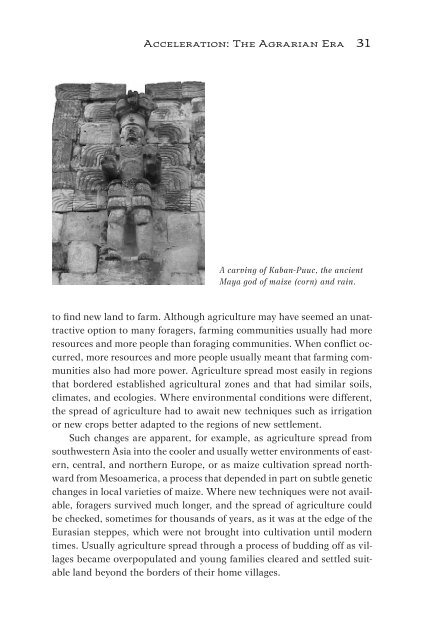This Fleeting World
This Fleeting World
This Fleeting World
Create successful ePaper yourself
Turn your PDF publications into a flip-book with our unique Google optimized e-Paper software.
Acceleration: The Agrarian Era 31<br />
A carving of Kaban-Puuc, the ancient<br />
Maya god of maize (corn) and rain.<br />
to find new land to farm. Although agriculture may have seemed an unattractive<br />
option to many foragers, farming communities usually had more<br />
resources and more people than foraging communities. When conflict occurred,<br />
more resources and more people usually meant that farming communities<br />
also had more power. Agriculture spread most easily in regions<br />
that bordered established agricultural zones and that had similar soils,<br />
climates, and ecologies. Where environmental conditions were different,<br />
the spread of agriculture had to await new techniques such as irrigation<br />
or new crops better adapted to the regions of new settlement.<br />
Such changes are apparent, for example, as agriculture spread from<br />
southwestern Asia into the cooler and usually wetter environments of eastern,<br />
central, and northern Europe, or as maize cultivation spread northward<br />
from Mesoamerica, a process that depended in part on subtle genetic<br />
changes in local varieties of maize. Where new techniques were not available,<br />
foragers survived much longer, and the spread of agriculture could<br />
be checked, sometimes for thousands of years, as it was at the edge of the<br />
Eurasian steppes, which were not brought into cultivation until modern<br />
times. Usually agriculture spread through a process of budding off as villages<br />
became overpopulated and young families cleared and settled suitable<br />
land beyond the borders of their home villages.


